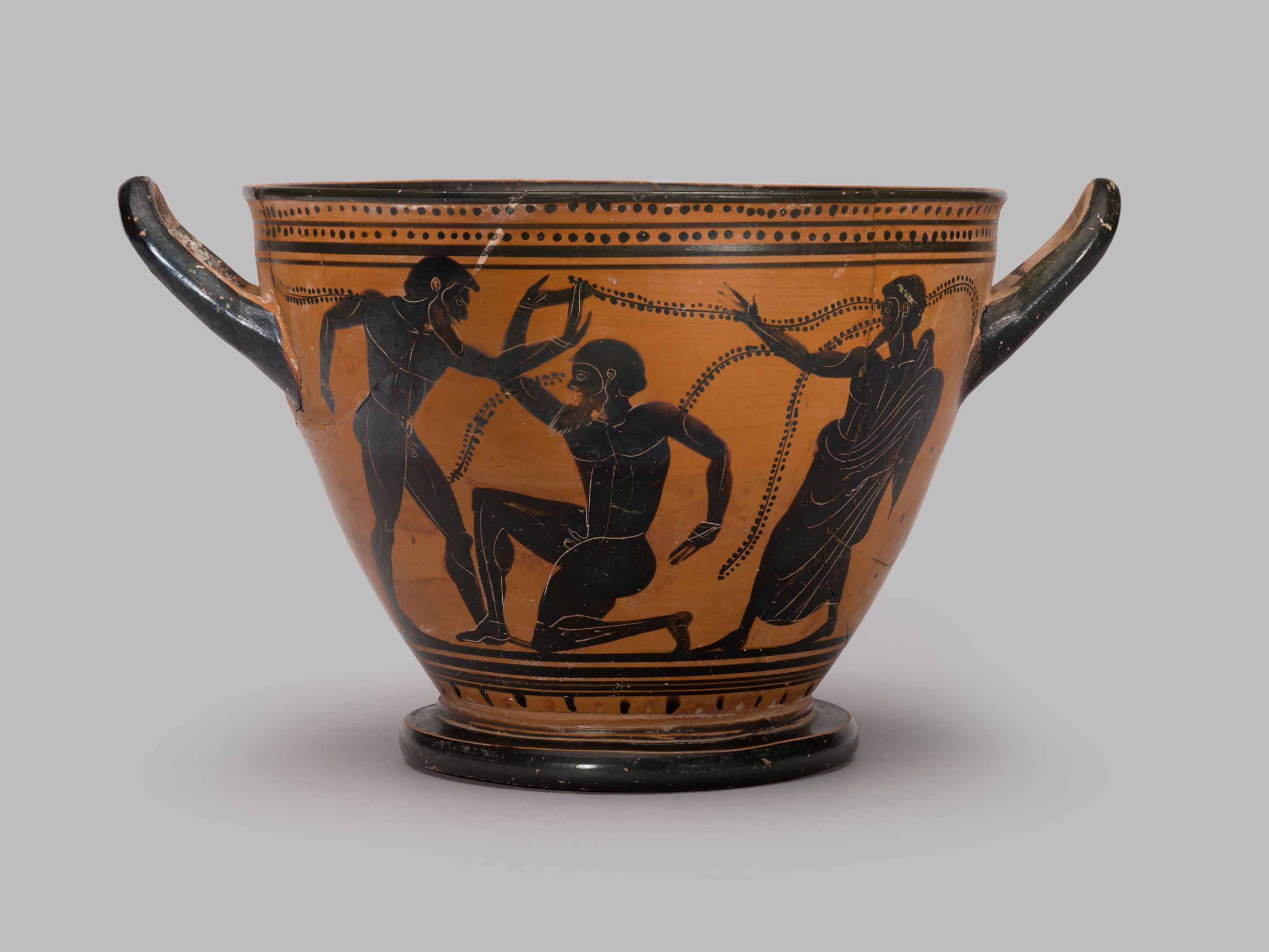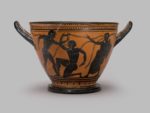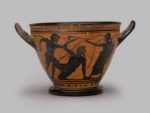
Skyphos [Gr11]
Athenian Black-Figure, by the Painter of Philadelphia MS 5481 (Krokotos Group), 525-500 BC
Painted terracotta (h. 17.8 cm, w. 30.6 cm), mended with minor restorations
Each side with two boxers fighting, a judge standing beside them. The upper and lower borders decorated with rows of dots. Below each handle is a white bird, probably a heron, but the paint on these has almost entirely disappeared.
The figures on this skyphos (drinking cup) are identifiable as boxers because of the himantes (leather thongs) wrapped around their hands. These protected the knuckles and reinforced the wrist. The fingers were left free so that the boxer could clench his fist to deliver a blow, and open his hand to ward off blows to the face or catch a punch. This cup clearly shows how the hands of the boxers were sometimes open and sometimes closed. The two sides of the cup appear to show different contests – on one side both figures have a long beard, but on the other one of the fighters has a noticeably shorter beard. This short-bearded boxer is shown at the moment of victory – his grounded opponent turns to the judge and raises a finger to signal defeat. Ancient Greek boxing matches had no rounds, and no time limits, going on until one of the fighters was unable or unwilling to continue.
Sport was a common theme on Greek vases, reinforcing its status as an integral part of social, political, and religious life. According to legend, the games at Olympia were first held in 776 BC, with other games at Delphi, Corinth and Nemea being founded in the early 6th century BC. Athletes travelled from all over the Greek world to compete in running, wrestling, boxing, javelin, discus, long jump, and horse racing. The popularity of sporting scenes on vases reflects the interests of the male citizen class who participated in the symposium. They had the leisure to train in the gymnasium and take part in competitions. Athletic pursuits were also important training for service in the Athenian army, which potentially included all able-bodied male citizens.
A number of other vases by the painter of this cup have been identified, including one in the National Archaeological Museum, Athens (362 cc 795), and in Philadelphia University Art Museum (MS 5481). This painter worked with, or under the influence of, a group of late 6th century painters known to art historians as the ‘Krokotos Workshop’. Like many other cups produced by this group, the skyphos at Winchester has two herons beneath the handles (though these have become very faded).
Literature: J. Falconer and T. Mannack, Corpus Vasorum Antiquorum: Great Britain, Fascicule 19: Winchester College (Oxford, 2002), p. 4, plate 3.1-4; A.D. Ure, ‘Krokotos and White Heron’, Journal of Hellenic Studies 75 (1955), p. 95, plate 9.4; Winchester College Memorial Buildings: Department of Classical Art (Winchester, 1909), p. 16 (no. 37)
Exhibited: Gosport Discovery Centre, March-May 2007; Winchester Discovery Centre, July-August 2012
Provenance: From Athens, at Winchester College by 1909
Location: Treasury, Gallery 3

